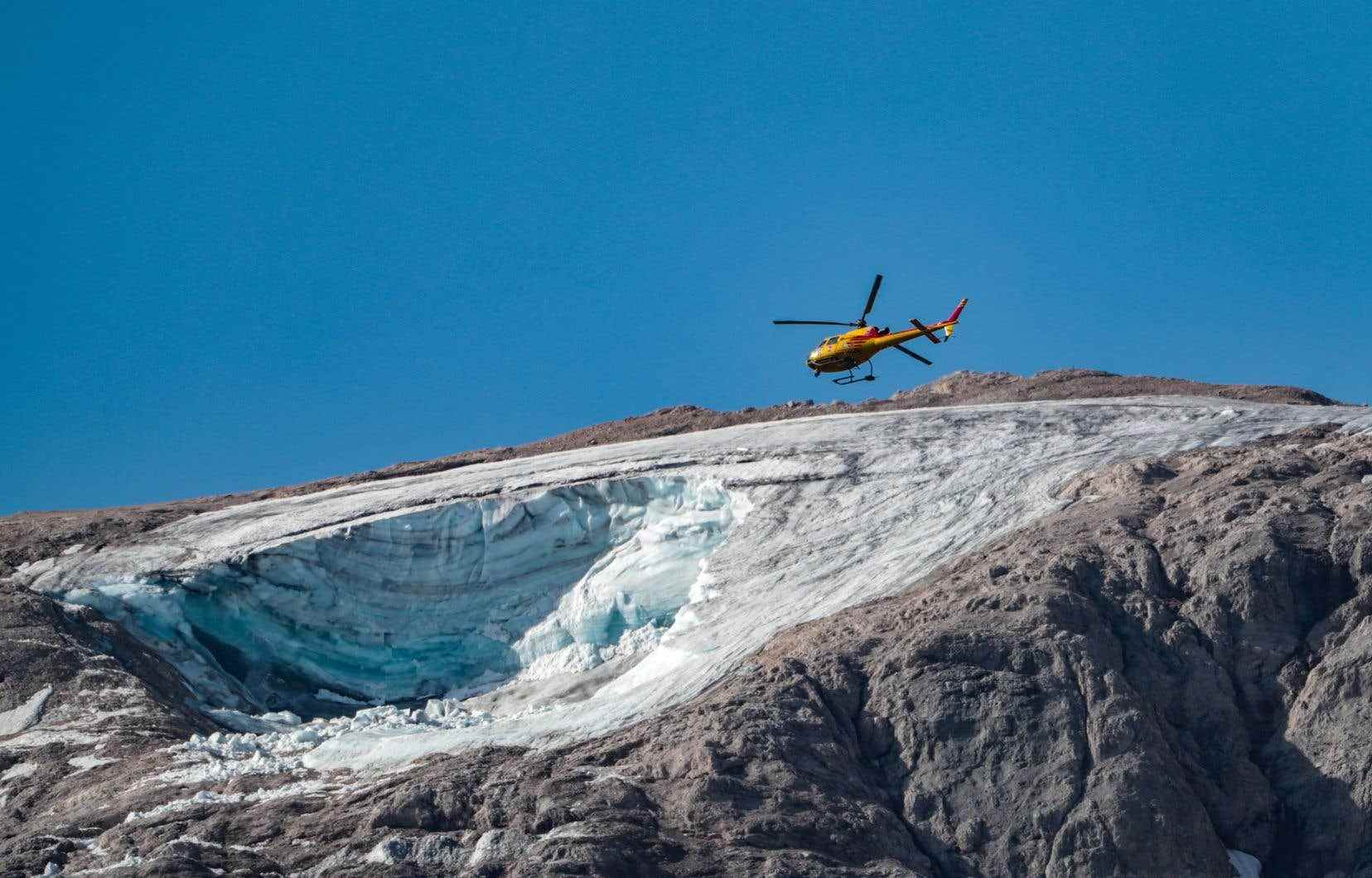The collapse of part of the Marmolada glacier, the largest in the Italian Alps, is well linked to global warming, the Italian Prime Minister confirmed on Monday the day after the disaster which left at least seven dead and eight injured.
Fourteen people are also reported missing by their relatives but their presence there when the glacier broke is not confirmed. Among the injured, two Germans, a 67-year-old man and a 58-year-old woman, are still in serious condition.
The disaster, which occurred the day after a record temperature of 10°C at the top of the glacier, in the midst of an early heat wave on the Italian peninsula, is “undoubtedly” linked to “the degradation of the environment and the climatic situation”, declared Mario Draghi on the spot on Monday, who expressed his “support” for the families of the victims.
Rescuers deployed drones equipped with thermal cameras, hoping to locate any survivors in the mass of ice and crumbling rocks, the mayor of the town of Canazei, Giovanni Bernard, told AFP. “These are dangerous conditions for the rescuers” who cannot progress on foot.
The chances of finding survivors “are almost nil”, warned the head of the high mountain rescue services in the region, Giorgio Gajer, to the AGI agency.
“I was on the terrace of the refuge, I heard a rumble, I turned to my left and I saw a mass of ice coming down from the mountain and then a large cloud of dust. It lasted two or three minutes and the cloud of ice dissolved,” Luca Medici, 54, a ski instructor living in Canazei, told AFP.
Only three of the seven victims have been identified, but their nationalities have not been released by authorities.
Accelerated melting
The glacier collapsed near the locality Punta Rocca, along the route normally taken to reach its summit.
The tragedy “is the consequence of the current meteorological conditions, that is to say an episode of early heat which coincides with the problem of global warming”, explained to AFP Professor Massimo Frezzotti, of the department of sciences of the Roma Tre University.
“The melting has accelerated in the Alps. We had an extremely arid winter, with a rainfall deficit of 40-50%. Current glacier conditions correspond to mid-August, not early July,” according to the researcher.
“Due to these very high temperatures, an accumulation of water unfortunately formed under the glacier, which caused the collapse,” Paolo Talmon, 56, owner of the inn in the village, told AFP. Marmolada glacier. “I’ve lived here for 50 years and this is the first time I’ve seen this. »
“Queen of the Dolomites”
Footage filmed from a shelter near the disaster shows the debris of the glacier mixed with rocks hurtling down the slopes of the mountain with a crashing noise at 300 km / h, according to local authorities. Other images taken by tourists on their mobile phones show the avalanche’s grayish tongue from afar, sweeping away everything in its path, leaving no chance for climbers in its path.
On images transmitted by the Alpine rescue, we can see the rescuers working near the site of the disaster, overflown by helicopters to transport the victims in the valley to the village of Canazei, not far from the place from where the cable car that leads to the top of the glacier.
The Marmolada glacier, nicknamed “the queen of the Dolomites”, is the largest glacier in this mountain range in northern Italy, which is part of the Alps. Located in Trentino, it gives birth to the Avisio River and overlooks Lake Fedaia.
According to the report of the Intergovernmental Panel on Climate Change (IPCC) published on March 1, the melting of ice and snow is one of the 10 major threats caused by global warming, disrupting ecosystems and threatening certain infrastructures. .
The IPCC indicates that glaciers in Scandinavia, central Europe and the Caucasus could lose 60 to 80% of their mass by the end of the century.
